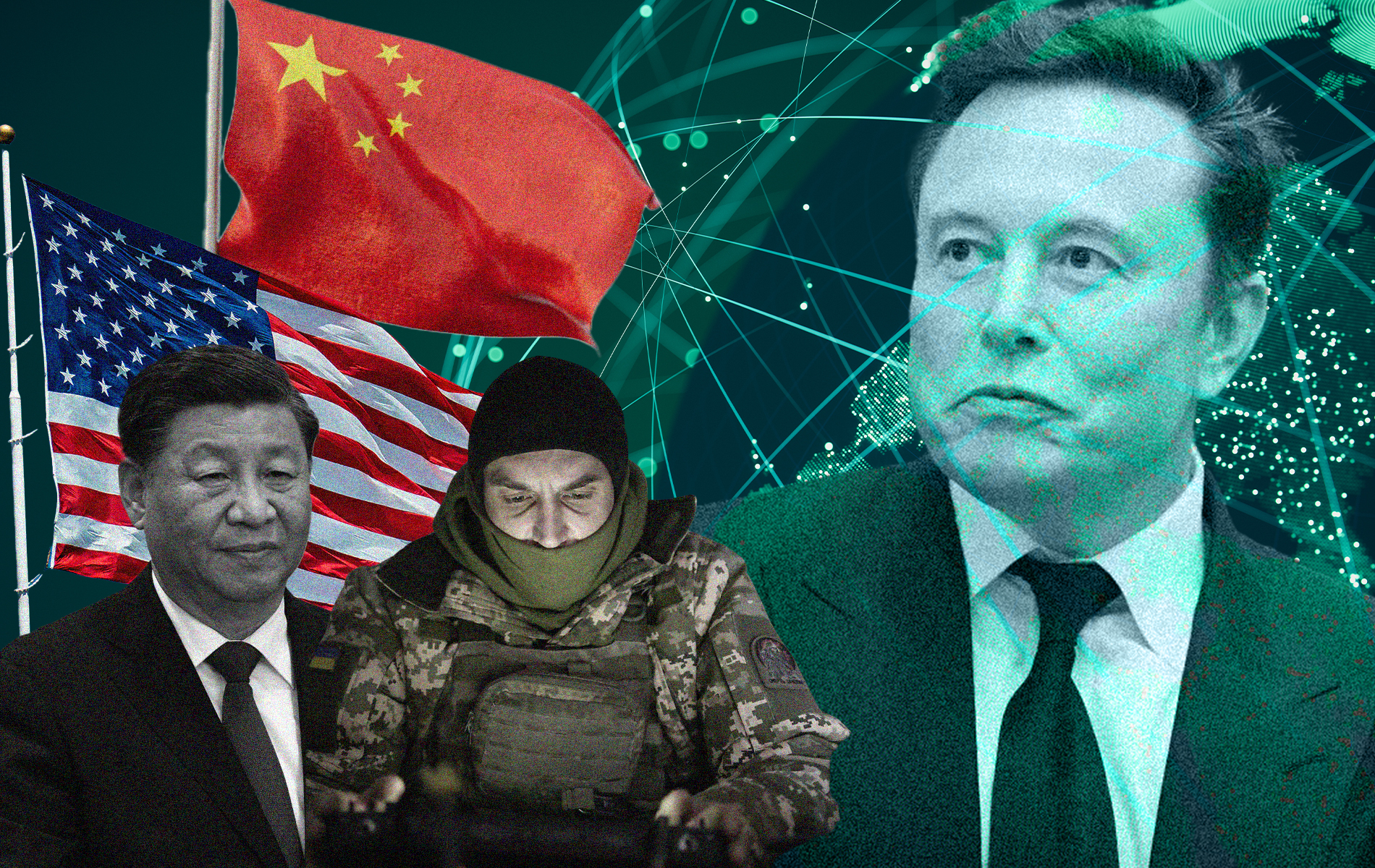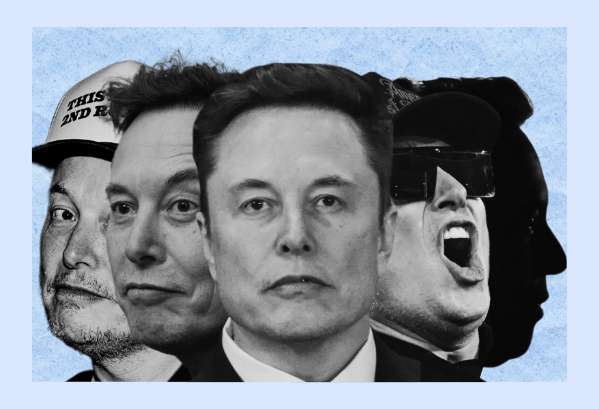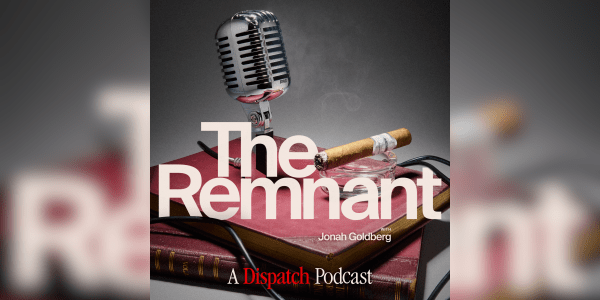Turn any article into a podcast. Upgrade now to start listening.
Premium Members can share articles with friends & family to bypass the paywall.
Elon Musk departed the Trump administration last week after a nearly five-month stint as one of Donald Trump’s closest advisers—a period during which Musk sought to transform the federal government by cutting spending, eliminating waste, and improving bureaucratic efficiency. Though Musk’s appointment as a special government employee was limited by law to only 130 days, the White House has said that Musk and Trump remain on good terms and that the Tesla CEO will continue to advise the president in an unofficial capacity.
Musk’s short but eventful tenure also laid bare how deeply tangled the billionaire’s private business ventures are with decision-makers in the federal government. This has been especially true for Starlink—a satellite internet provider and subsidiary of Musk’s space technology company, SpaceX.
On May 7, the Washington Post reported that government officials in Lesotho awarded Starlink the country’s first-ever satellite internet license, in hopes that the deal would be a demonstration of goodwill toward the White House in tariff negotiations.* Starlink has similarly secured distribution deals in India, Bangladesh, Pakistan, Vietnam, Somalia, and the Democratic Republic of the Congo in recent months.
In the piece, the Post also reported that the State Department had “pushed nations to clear hurdles for U.S. satellite companies, often mentioning Starlink by name,” and that government officials in India had fast-tracked regulatory approvals for Starlink with the understanding that it would aid their tariff negotiations with the administration. However, the reporting does not indicate that approvals for Starlink were explicit elements of the trade negotiations, or whether the approvals were targeted specifically at influencing Musk.
Following the Post story, Rep. Gerald E. Connolly, ranking member of the Committee on Oversight and Government Reform (who has since passed away), wrote to the State Department’s acting inspector general requesting an investigation of “potential involvement by the White House or Mr. Musk in the Department’s decision to urge countries to approve usage of Starlink, as well as any way the Department may have considered Starlink licensure as part of any trade or tariff negotiations.” In early May, a group of Democratic senators wrote to Trump expressing concern over Musk’s influence, citing reports that several countries involved in tariff negotiations had rushed distribution deals with Starlink.
Starlink has also been at the forefront of conflict of interest discussions domestically as the Trump administration considers changes to the Broadband Equity, Access, and Deployment (BEAD) program—a federal initiative funded by the 2021 Infrastructure Investment and Jobs Act targeted at expanding high-speed internet access in underserved parts of the country.
In March, Commerce Secretary Howard Lutnick announced that his department had “launched a rigorous review of the BEAD program,” that would “[rip] out the Biden Administration’s pointless requirements,” and “take a tech-neutral approach that is rigorously driven by outcomes, so states can provide internet access for the lowest cost.” The specifics of the changes are still unknown, but the administration is expected to make it easier—and in some cases required—for states to direct funding toward satellite internet providers like Starlink over traditional fiber internet providers.
Questions around whether the administration was influenced by Musk to promote Starlink at home and abroad are muddied by the fact that the company provides a legitimately useful—and, for now, one-of-a-kind—service that can be beneficial to both domestic and geopolitical policy priorities. Starlink’s technology was also promoted by the State Department during the Biden administration, and it has become an important factor in global military conflict and great power competition.
What is Starlink?
Starlink is a form of satellite internet, meaning it relies on radio waves sent between a ground-based antenna or dish and a satellite in orbit above the Earth to maintain an online connection. Satellite internet itself isn’t novel—commercial access to satellite-based broadband has been available in some form for more than two decades, and satellite television is more than 60 years old.
“Starting in the 1970s, commercial satellite networks began to be deployed with satellites in what's called geostationary orbit (GEO), which is about 23,000 miles up,” Jonathan McDowell, an astrophysicist at the Harvard-Smithsonian Center for Astrophysics and operator of a website that tracks global satellite launches, told The Dispatch. While in GEO, satellites match the rotational speed of the Earth, meaning dishes on the ground don’t have to swivel to follow the satellite, and a small number of satellites—in principle, only three or four—are required to cover the entire globe. “But it has a disadvantage,” McDowell said. “You’re 23,000 miles away, and that has implications not only for your signal strength, but also for your latency.”
Starlink's satellites reduce this latency delay—the time it takes for data to travel across the network—by maintaining what's known as low Earth orbit (LEO). But networks using LEO require thousands of satellites to maintain coverage, resulting in one of the most significant barriers to creating LEO networks: deploying enough satellites into space.
Starlink’s advantage.
While critics are concerned that Starlink has capitalized on Musk’s relationship with the administration, the business also benefits from the fact that it was “the first deployment of one of these large, high bandwidth, low orbit communication systems,” according to McDowell. And it remains one of the only operational networks worldwide.
Starlink deployed its first satellites in 2019, and it now has more than 7,000 in orbit above the Earth. Competitors like Amazon’s Project Kuiper and Eutelsat OneWeb have begun to deploy satellite constellations of their own, but not nearly to the extent of Starlink. Eutelsat OneWeb currently has approximately 600 satellites in orbit, and Kuiper—which launched its first batch of commercial-quality satellites in April—has 27 satellites in orbit with more launches planned this year.
“Musk’s short but eventful tenure also laid bare how deeply tangled the billionaire’s private business ventures are with decision makers in the federal government. This has been especially true for Starlink.”
Much of Starlink’s competitive advantage derives from its vertical integration with SpaceX—the spacecraft and rocket company founded and helmed by Elon Musk. In the modern era, no company has come close to launching as many rockets as regularly and affordably as SpaceX. “That is a huge advantage in the massive capital investment that’s needed to deploy these huge LEO constellations,” McDowell explained.
Amazon’s Project Kuiper, for example, will have to pay to launch its satellites with a number of private delivery providers. Blue Origin—the space company founded and owned by Amazon CEO Jeff Bezos—will deliver many of Kuiper’s satellites into orbit, but the company has also negotiated launch contracts with Paris-based ArianeGroup, Lockheed Martin and Boeing’s United Launch Alliance, and even with SpaceX itself.
Technical limitations.
Still, LEO constellations suffer from several limitations that can limit functionality. “There is huge potential utility to Starlink and other LEO options; and it is also a broadband service option that is exceptionally over-hyped, and whose limitations are too often downplayed to outright ignored,” Sascha Meinrath, a telecommunications policy expert at Penn State University, told The Dispatch. “Thus, being purposeful about the utility of deploying Starlink, while simultaneously appreciating the trade-offs, is the big opportunity.”
One of LEO’s drawbacks is that poor weather interferes with satellite signals. Second, mountainous terrain or heavy foliage can negatively affect signal strength and reliability. Third, satellite internet, even when provided by satellites in LEO, cannot reach the same speeds and low latency rates of fiber internet. Finally, the cost of long-term upkeep of LEO constellations is significantly more than that of fiber networks, and fiber infrastructure is easier to maintain and upgrade over time.
LEO networks do have important utility—though the novelty of the technology means that its full potential is not yet completely clear. “LEO has a lot of utility for niche applications, for example, extremely rural, low population density areas where you have no topology, no foliage, and no extreme weather,” Meinrath said. Some rural counties and Native American reservations, for example, used Starlink during the 2024 presidential election to provide internet connectivity to the online poll books used to check voter registrations.
LEO networks can also provide important redundancy by providing backup access to internet connection during emergencies. In October 2024, Starlink was used to provide internet access in areas of North Carolina hit by Hurricane Helene in an effort pushed by the Biden administration. “It’s wonderful in emergency environments, like when there's a natural disaster and the grid goes down,” Drew Garner, director of policy engagement at the Benton Institute for Broadband & Society, told The Dispatch. “It’s perfect for that, and quick to deploy.”
Changes to BEAD.
Even though many broadband policy experts recognize the utility of LEO constellations like Starlink in the broader telecommunications ecosystem, they are concerned that potential changes to the federal BEAD program could lead to the prioritization of LEO networks even where fiber remains the best long-term solution to universal broadband access. From its outset, BEAD has maintained a “fiber first” bias, and states have thus far prioritized funding for fiber networks in all but a small minority of cases. That prioritization, however, could soon change.
The policy question, Garner explained, hinges on whether short-term or long-term costs are prioritized. “Fiber has a very high upfront cost, and satellite has a very low upfront cost,” he said. If the BEAD program implements a low expenditure threshold on a cost-per-location basis, it could force states to scrap plans for expanding fiber access in favor of investing in LEO systems. This is despite fiber being, in the opinion of some experts, a higher quality, more reliable, and cheaper long-term investment. “Once you build fiber, the maintenance cost is very low, so it’s very cheap to run a fiber network for 40 or 50 years,” Garner said. “The satellite cost is very high for maintenance, because the satellites burn up every five years, so you have to basically keep rebuilding the entire network every five years with rocket launches and satellite construction.”
This perspective is not shared by all experts in the telecom space, however. In a June 3 op-ed in The Hill, Joe Kane, director of broadband and spectrum policy at the Information Technology and Innovation Foundation, argued that BEAD funding would go farther in closing the digital divide by prioritizing making broadband affordable for underserved Americans, not by investing in costly fiber projects. “When you look at the causes of the digital divide, we find that deployment is a really small part of that,” Kane told The Dispatch.
To some extent, Kane said, the fact that LEO technology is closely associated with Musk has warped some of the public debate around its utility. “I would not say that [Musk] is blameless in all of that. But I also think it is important to say, ‘let’s have our broadband policy be about getting people connected, not about who is ending up doing that and who gets the money for it,’” Kane said. “But, I also think there are ways, and I’d be in favor of ways, of creating more safeguards to prevent conflicts of interest on this front as the NTIA goes about reforming its guidance.”
The Department of Commerce and the National Telecommunications and Information Administration did not respond to questions from The Dispatch about what changes are expected to be made to the BEAD program’s rules.
Great power rivalry.
LEO technology has also quickly become an important element of global telecommunications competition, particularly within the U.S.’s geopolitical rivalry with China. The technology’s importance to Ukraine has highlighted how reliable and portable broadband connection can be indispensable in conflict zones.
Shortly after Russia’s invasion of Ukraine in 2022, Musk provided Starlink terminals to the Ukrainian government. Musk and SpaceX initially covered the cost of operating the system in Ukraine, but the terminals were eventually purchased by and funded by the Pentagon. “Starlink’s use in Ukraine made the militaries of the world sit up and go, ‘I won’t be one of those,’” McDowell, the Harvard astrophysicist, told The Dispatch. “This desire for national solitary control is likely to mean that a lot of governments around the world invest in somewhat smaller-scale but comparable systems for their own, particularly military, but also national communications infrastructure.”
This global rush for LEO networks also presents a new playing field on which the U.S. will compete with China—a competition that has been developing across the telecom space for decades.
“On the one hand, there are potential [conflict of interest] concerns with Elon Musk, not only because of his involvement in the administration, but because of his relationship with China through Tesla,” Michael Sobolik, a senior fellow at the Hudson Institute and expert in U.S.-China relations, told The Dispatch. “But, with all that said, this is legitimate great power competition territory, because there are Chinese companies out there that are competing for contracts that would offer similar services that Starlink offers.”
Sobolik compares the issue to the global race to establish 5G wireless mobile networks. Over the past decade, China has raced to develop and deploy 4G and 5G technology worldwide through its Digital Silk Road—part of a broader global infrastructure project known as the Belt and Road Initiative. The Chinese government and Huawei, a Chinese telecommunications company, have together provided mobile network infrastructure to dozens of foreign countries, including 70 percent of Africa’s 4G networks as of 2019. Meanwhile, the U.S. was forced to lobby hard to keep Huawei’s 5G networks from also dominating Europe’s telecom infrastructure.
Because of China’s 2017 National Intelligence Law, which obligates Chinese firms to cooperate with Chinese government intelligence services, 5G networks built by Huawei could be used by the Chinese Communist Party to collect intelligence and monitor communications across the globe. The establishment of Chinese-built mobile networks also encourages the future adoption of new technology from Chinese entities, locking countries into utilizing Chinese-provided infrastructure over longer time horizons.
“I think a good rule of thumb is all of these nations that China has been reaching out to for the past decade—principally on the back of the Belt and Road Initiative—they’re going to their partners, and they are trying to secure contracts with Chinese companies to box out Starlink,” Sobolik said. “That not only is bad for U.S. businesses, that is very bad for [strengthening] Beijing's ability to conduct transnational repression abroad.”
But unlike in the race for 5G networks, where the U.S. fell behind China, the U.S., and Starlink in particular, currently have a significant advantage over Chinese providers. Neither of China’s LEO projects—one state-run project and one private enterprise—has yet achieved the critical mass of satellites necessary to maintain a reliable network.
This competition means that, despite Musk’s close relationship to the White House, efforts by the administration to encourage LEO adoption abroad are not necessarily fueled by favoritism. “I do understand what the administration is trying to do, and it is good that they are trying to help Starlink be more competitive with getting these contracts, because we want Starlink to be the provider for satellite internet connectivity and not its Chinese competitors, full stop. So that is good,” Sobolik said.
According to the administration, its support for LEO technology isn’t limited to Starlink and is a central aspect of its broader national security and economic strategy. “There is a new space race underway. And while the United States is in the leadership position, China has made clear that it wants to gain a dominant position in the delivery of satellite-based services,” a Federal Communications Commission (FCC) spokesperson told The Dispatch. “It is in our national security and economic interests to ensure that U.S.-based businesses can launch and succeed in orbit. That is why the FCC has been pursuing a Final Frontiers agenda that gives every one of the many different U.S.-based satellite and space businesses a fair shot at prospering both here and around the globe.”
Support for American LEO technology also isn’t new to the Trump administration—the technology was similarly promoted under President Biden. In a report outlining the State Department’s international cyberspace and digital policy strategy under Antony Blinken, satellite communications are referred to as “a vital capability for connecting the world and delivering global access to information,” and LEO technology is described as “increasingly important to the United States, its allies, and partners as we work to connect the unconnected.” The report boasts that U.S. firms are leading the global race for LEO constellations, and that the State Department will “cooperate with partners and allies to pursue shared interests in the development, use, resilience, and security of LEO satellite systems.”







Please note that we at The Dispatch hold ourselves, our work, and our commenters to a higher standard than other places on the internet. We welcome comments that foster genuine debate or discussion—including comments critical of us or our work—but responses that include ad hominem attacks on fellow Dispatch members or are intended to stoke fear and anger may be moderated.
With your membership, you only have the ability to comment on The Morning Dispatch articles. Consider upgrading to join the conversation everywhere.